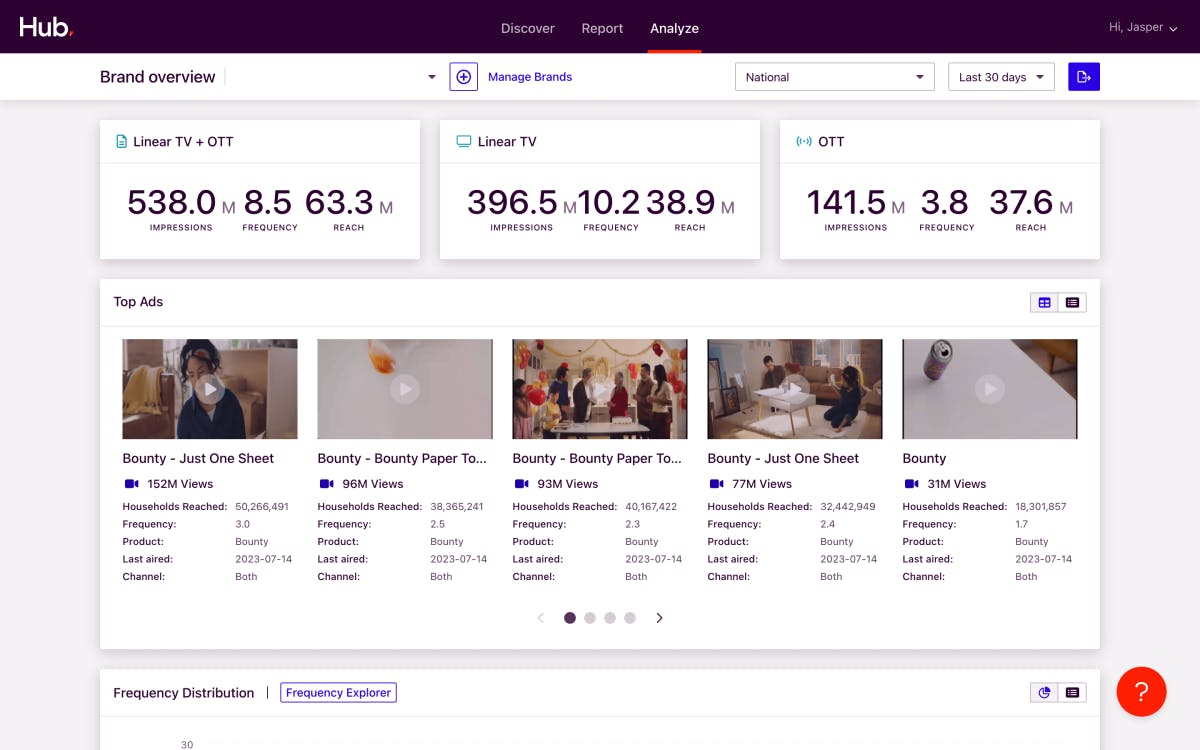
Connected TV (CTV) is taking the programmatic industry by storm. “The CTV gold rush” is our new blog series which looks at some of the most prevalent challenges within CTV, and how to overcome them. With some great research-based insights and plenty of tips, you’ll come away armed with more knowledge and better CTV strategies. Check out the rest of the series for more great insights, including the subject of content transparency and fraud, and find out where your CTV ads are really running.
The potential of Connected TV (CTV) is huge. But while marketers continue to buy CTV in a similar way to linear, its potential is still largely untapped. Advertisers are falling into common traps and aren’t capturing all the audience targeting benefits. In this blog, we look at how to use digital data to reach valuable audiences, and tackle common challenges one-by-one.
Challenge 1: Finding your fickle audience across CTV content
The explosion of apps, channels and shows has created endless variety and huge fragmentation. This means consumers are fickle about subscriptions and often change platforms so they can consume the latest content. You can read more about this in our first blog of the series.
Because of this, apps and genres that worked last month may not work every month. So signing up for a long-term deal with a specific network can be dangerous. Only an agnostic approach to platform connection (under one roof) will future-proof your strategy and adapt to monthly viewership changes. Moral of the story? Don’t put all your eggs in one basket.
To explore this further, watch our recent US webinar: ‘The CTV Gold Rush’. You’ll hear experts across the advertising industry discuss media inventory, transparency ad performance.
Challenge 2: Managing frequency across platforms for the best audience reach
What’s the optimal ad frequency? Research from McKinsey suggests that it’s somewhere between 3 and 4. In spite of this, our TV Intelligence tool shows that some brands actually expose some households to the same TV ad between 10 to 15 times! This can lead to around 80% of ads being shown to just 20% of your audience. It’s a waste of budget, and a wasted opportunity to reach under-exposed audiences. Not to mention it’s a terrible experience for the customer, which negatively affects the brand and the app.
This used to be a challenge associated only with linear TV, but now direct CTV buys can exacerbate this problem too. The average household has 7+ apps, so there’s often audience overlap. But because it’s tricky to manage frequency over them, there can be either an over-saturation or under-saturation of your audience.
But there’s a solution to this challenge. By looking at your ad frequency across linear and OTT apps together, you can plan how to reallocate your campaign spend and achieve the right balance.

Challenge 3: Focusing on your true goal
Whether it’s increasing website visits or encouraging conversions, ad campaigns are generally looking to drive a particular action. It might be that you want to reach people who are most likely to order pizza on your app. But instead of using old-fashioned methods and focusing on broad reach by targeting specific content, there’s a more effective way to reach your audience. (After all, just because someone is watching a cooking show doesn’t mean they want to order pizza!)
Firstly, it’s important to define what the actual goal is. In this case, perhaps it’s using digital signals to reach people who have ordered pizza over five times in the last year.
And secondly, it’s important to recognize that you’re most likely to achieve this with the audience you already have in your CRM, with those who have already shown interest in your brand, or those who look most similar to either of those.
Because CTV is digital, it offers new opportunities to connect those audiences to their viewership data. The catch? It can be complex.
Technology like our Performance Engine makes connecting your audience with their viewership data less complex. Our Performance Engine allows for fast and scaled data connection which allows for smarter campaign set up, more intelligent optimization strategies, and custom bidding algorithms that hit your precise KPI.
Challenge 4: Taking share of voice from your competitors
While you might have a great CTV strategy in place, one thing can stand in the way of those valuable customers: your competitors. If their strategy is better, you could lose out. Luckily, viewership data can help you understand where your competitors’ ads are running. So you can either challenge them, or concentrate on other places to gain market share.
And with MiQ’s TV Intelligence tool, this process has never been easier. You can see these insights side-by-side with your own campaigns, helping you make quicker and more informed decisions on planning and strategy.

CTV solutions under one roof
So, as we’ve seen, finding your most valuable audience on CTV isn’t easy. There are multiple challenges: whether it’s navigating fragmentation, achieving the right ad frequency, using digital to achieve your right goal, or taking share of voice from your competitors. But no matter the challenge, our expertise and agnostic approach, together with our Performance Engine and Intelligence Tool can help.
Get in touch for a demo of our TV Intelligence tool.



